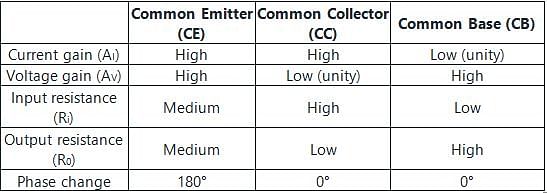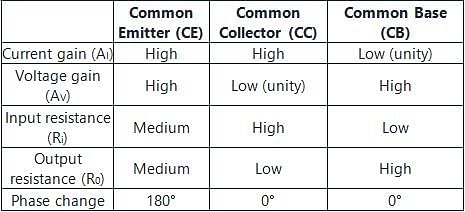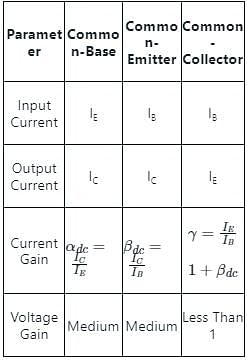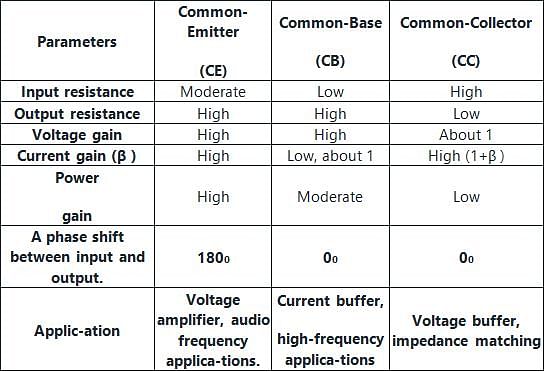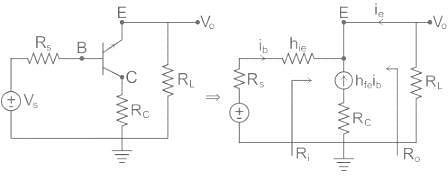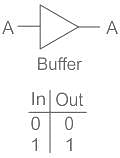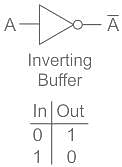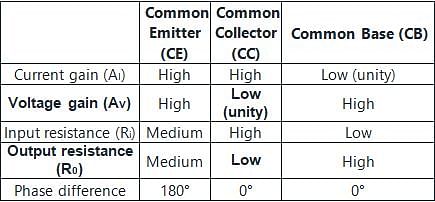Electronics and Communication Engineering (ECE) Exam > Electronics and Communication Engineering (ECE) Tests > Electronic Devices > Test: Common Collector Configuration - Electronics and Communication Engineering (ECE) MCQ
Test: Common Collector Configuration - Electronics and Communication Engineering (ECE) MCQ
Test Description
10 Questions MCQ Test Electronic Devices - Test: Common Collector Configuration
Test: Common Collector Configuration for Electronics and Communication Engineering (ECE) 2024 is part of Electronic Devices preparation. The Test: Common Collector Configuration questions and answers have been
prepared according to the Electronics and Communication Engineering (ECE) exam syllabus.The Test: Common Collector Configuration MCQs are made for Electronics and Communication Engineering (ECE) 2024 Exam. Find important
definitions, questions, notes, meanings, examples, exercises, MCQs and online tests for Test: Common Collector Configuration below.
Solutions of Test: Common Collector Configuration questions in English are available as part of our Electronic Devices for Electronics and Communication Engineering (ECE) & Test: Common Collector Configuration solutions in
Hindi for Electronic Devices course. Download more important topics, notes, lectures and mock
test series for Electronics and Communication Engineering (ECE) Exam by signing up for free. Attempt Test: Common Collector Configuration | 10 questions in 30 minutes | Mock test for Electronics and Communication Engineering (ECE) preparation | Free important questions MCQ to study Electronic Devices for Electronics and Communication Engineering (ECE) Exam | Download free PDF with solutions
Test: Common Collector Configuration - Question 1
Which amplifier circuit is used as an emitter follower circuit?
Detailed Solution for Test: Common Collector Configuration - Question 1
Test: Common Collector Configuration - Question 2
Identify the correct statement/s.
I. The other name for the common collector amplifier is emitter follower.
II. Power gain of the common emitter amplifier is high.
I. The other name for the common collector amplifier is emitter follower.
II. Power gain of the common emitter amplifier is high.
Detailed Solution for Test: Common Collector Configuration - Question 2
| 1 Crore+ students have signed up on EduRev. Have you? Download the App |
Test: Common Collector Configuration - Question 3
Which one is suited best for impedance matching?
Detailed Solution for Test: Common Collector Configuration - Question 3
Test: Common Collector Configuration - Question 4
Which of the following is NOT true for a common collector transistor?
Detailed Solution for Test: Common Collector Configuration - Question 4
Test: Common Collector Configuration - Question 5
The output signal of a common-collector amplifier is always:-
Detailed Solution for Test: Common Collector Configuration - Question 5
Test: Common Collector Configuration - Question 6
The phase shift between input and output of an emitter follower is _____
Detailed Solution for Test: Common Collector Configuration - Question 6
Test: Common Collector Configuration - Question 7
The output and input voltages of an emitter-follower have a phase difference of _______.
Detailed Solution for Test: Common Collector Configuration - Question 7
Detailed Solution for Test: Common Collector Configuration - Question 8
Test: Common Collector Configuration - Question 9
A voltage buffer has the following characteristics:
Detailed Solution for Test: Common Collector Configuration - Question 9
Test: Common Collector Configuration - Question 10
The output impedance of a BJT under common-collector configuration is
Detailed Solution for Test: Common Collector Configuration - Question 10
|
21 docs|29 tests
|
Information about Test: Common Collector Configuration Page
In this test you can find the Exam questions for Test: Common Collector Configuration solved & explained in the simplest way possible.
Besides giving Questions and answers for Test: Common Collector Configuration, EduRev gives you an ample number of Online tests for practice
|
21 docs|29 tests
|
Download as PDF



